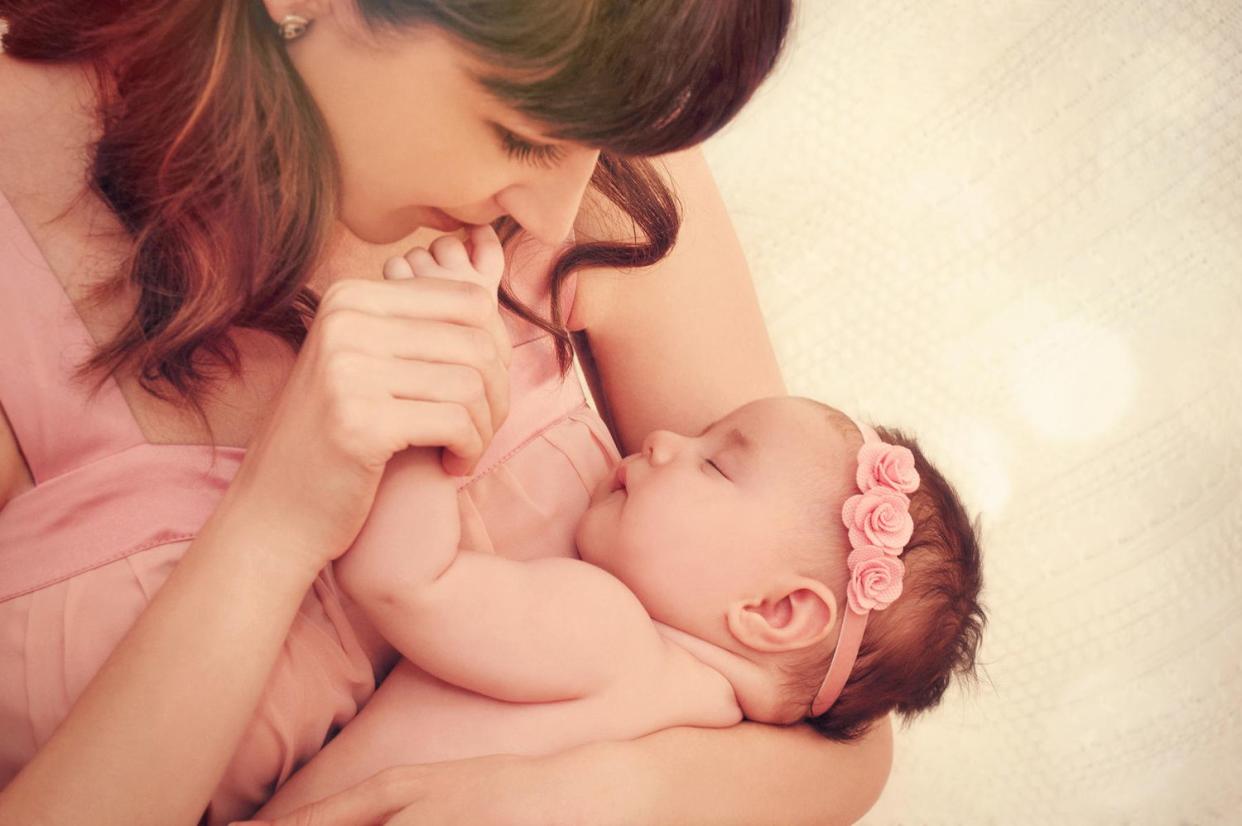8 Things You Can Do With Your Placenta After Birth

This stock image is what Lauren expected to look and feel like postpartum. Misfire_studio/Shutterstock
Looking for things you can do with your placenta after birth? We've got you covered. Though not nearly as exciting as your newborn baby, your placenta is a pretty spectacular thing. The organ provides nourishment and oxygen to your growing child throughout pregnancy. The placenta is typically delivered within five to 30 minutes of childbirth (though it can take up to an hour)—and if you want to keep yours, you probably can.
Placentas were once routinely disposed of by U.S. hospitals, but nowadays more parents are keeping the placenta after birth—perhaps with good reason. If you do think you want the option to take your placenta home, be sure to talk to your doctor or midwife ahead of delivery time, as every hospital and birthing facility has different policies, and they may need to do some additional prep to release your placenta to you.
But if you decide to take that step and are looking for ideas for how to get creative with your placenta, here are eight things you can do with it.
1. Eat Your Placenta
A practice known as placentophagy, some people choose to eat their placenta after birth. They usually either encapsulate it into pill form or add it to smoothies. And it's becoming more popular, with celebrities like Hilary Duff, Kourtney Kardashian, and January Jones eating or taking placenta pills after birth.
While there isn't scientific proof that consuming your placenta has any health benefits, some parents swear it does help. "Many moms report feeling a boost of energy after consuming their placenta, while others feel it helps them keep an 'even keel' through the postpartum hormonal ups and downs," says Jennifer Mayer, certified placenta encapsulation specialist and owner of Brooklyn Placenta Services. "Others feel it helps with breast milk production."
Keep in mind, however, that there are risks involved with eating your placenta. Mainly, it could be contaminated or spread illness. A 2016 report from the Centers for Disease Control and Prevention (CDC) also says a healthy baby developed B Streptococcus agalactiae bacteremia (group B strep) linked to his mother's consumption of her placenta.
RELATED: The Risks of Eating the Placenta
2. Donate Your Placenta
Parents can also choose to donate their placenta after birth. The nutrient-dense tissue can help with reconstructive procedures, the healing of wounds and burns, ocular procedures, spinal surgeries, and other medical needs. Placenta donation must be done through an accredited tissue bank; you'll need to get specific authorization, although the process won't harm your child in any way. If donation is your plan, tell your healthcare provider in advance as they may need to get special authorization or fill out paperwork ahead of time. Note that parents can donate other birth tissue as well, including umbilical cord tissue, the amniotic membrane, and amniotic fluid. Find out more information at Donate Life America.
3. Make a Placenta Salve
If you simply can't stomach the idea of guzzling your placenta down with some frozen strawberries in a smoothie, many encapsulators also offer the option of a body salve. This purportedly may help with C-section scars, perineal tears, and cracked nipples.
RELATED: 4 Types of Perineal Tears
4. Make Jewelry
Whether you go with a delicate pendant, beaded bracelet, or tiny drop earrings, having your placenta made into jewelry will make for a beautiful and constant reminder of your pregnancy—and, of course, one heck of a conversation piece.
5. Plant Your Placenta
Don't have the desire to swallow your placenta via pills, smoothies, or other consumable ways, but feel it's too sacred to dispose of at the hospital? One potential solution: Planting the placenta after birth. This symbolizes a baby's link to the earth in certain cultures, but some modern parents like the idea of planting their placenta alongside a tree in their yard that will grow with their baby. It's a sweet visual reminder of how you were both once physically connected to one another!
RELATED: Planting Your Placenta
6. DIY a Placenta Shirt
For the less blood-averse parents out there, you can get your creative juices flowing—so to speak—by inking a onesie or toddler T-shirt with your placenta blood. (Note: Best done before your child is old enough to tell you they don't want to wear a placenta-stained shirt.)
7. Create Placenta Art
Crafty parents can also try making placenta prints to frame and hang in the home. Consider going with the popular Tree of Life design to honor the beginning of your baby's life.
8. Buy a Placenta Photo Frame
Forget the $5 frame from Target; display your baby's first photo in a picture frame made of your placenta. Sure, it's a little meta, but when you think about it, why wouldn't you have such a precious and meaningful photo placed inside an equally precious and meaningful frame?

